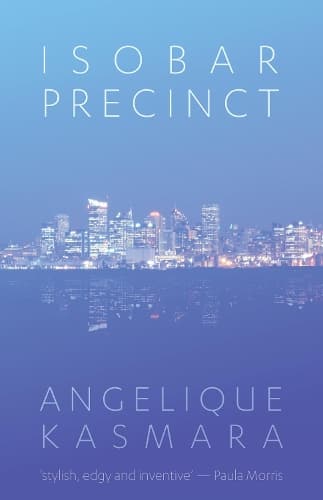Review: Isobar Precinct
Reviewed by Ruth Spencer
Lestari Aris tattoos out of her own Karangahape Road studio. She tends to pick up waifs and strays. There’s Jasper, who’s 15 and lives under the studio stairs, and young Joe, who’s in some serious trouble. There’s a strange new drug on the scene, linked to old clandestine clinical trials at Carrington. Lestari’s former boss may be mixed up in its street distribution, filtering it down to the vulnerable rough sleepers of the central city.
It would be a disservice to the intricate web of plotting to provide too many spoilers but an early reference to MKUltra foreshadows the intricate and disorienting vortex of misdirection that draws Lestari in and challenges her relationship with reality.
K Road is a storied place, famous or notorious depending on who you ask. With a decades-long reputation for being a hub of illicit activity, it’s also a workplace and a living space and therefore also filled with the mundane: sex, drugs and sausage rolls. Angelique Kasmara’s exciting, fast-paced speculative novel fully inhabits this street and this tension. Kasmara has an eye for nuance in all things, allowing her characters grit and softness, resilience and temptation, commitment and prevarication. There are drugs that help and drugs that make things worse. Choices come in shades of grey.
If K Road is the scenic star, a Best Supporting Location award goes to the Symonds Street cemetery, that lost repository of forgotten ex-citizens that lurks between Grafton gully and K Road. Six hectares of lichen, graves, midnight trysts and rough sleepers, in this incarnation it lurks just out of sight of safety, inhabited by predators and silence. In this incongruous empty nowhere in the middle of the crowded city, Isobar Precinct takes its first steps with the aggressive, absurdist-punk stride that characterises the book.
Lestari accompanies her business partner Frank on a mission to deposit his latest artwork, an ironically pacifistic concrete sculpture of St Michael, in the cemetery for it to be worshipped or desecrated as the graveyard denizens decide. While there, they witness something terrifying that sends Lestari on a wild and dangerous journey that could kill her at any moment – more than once, if she’s careless.
Those familiar with Auckland will revel in its new shadows and character. Lincoln Road, that grim strip of endless takeaways and traffic lights, is given a brief glamour as Franchise Boulevard, where Lestari’s dad reckons you’d be best placed to live out a zombie apocalypse. Somewhere tucked in between the supermarket and the Mitre 10 Mega, where your food, tools and makeshift weaponry would be right to hand. A precarious lifetime on Lincoln is a prospect to give the apocalypse new horror.
Like the street foods Lestari orders, italicized dishes from other languages grabbed in a hurry between tattooing sessions and self-defence class, Kasmara’s writing is spiky, sharp and deliciously spicy on the tongue. It’s at once world-building and vernacular: the language enhances the tension and urgency as the action unfolds and keeps the increasingly fantastical aspects grounded in the tangible familiar. Lestari embodies this style – brusque, guarded and sensitive but equally wry and smart, someone whose character justifies the loyalty of her friends. While the speculative elements unfold with all their fascinating ramifications, they’re filtered through human experience, through desires, longings and utility, as all scientific breakthroughs inevitably are. Lestari is confronted with the tensions between help and harm, regret and hope, moments when life should have been different and what, if anything, she might do about it.
Reviewed by Ruth Spencer
